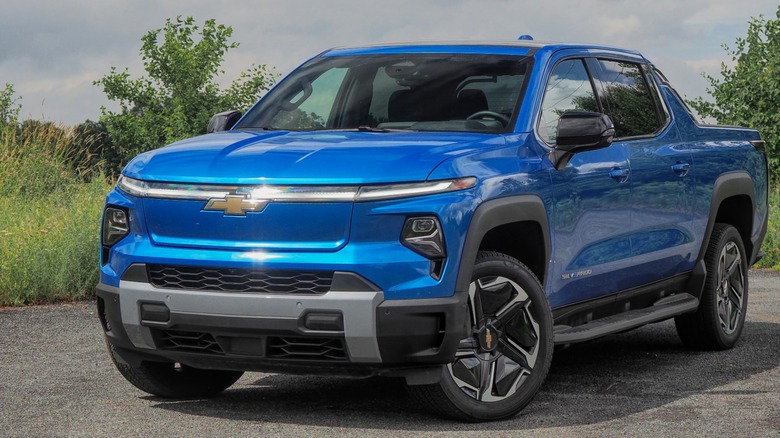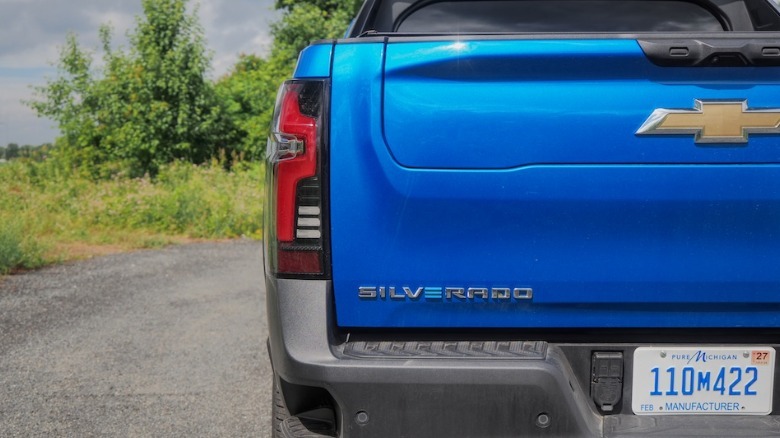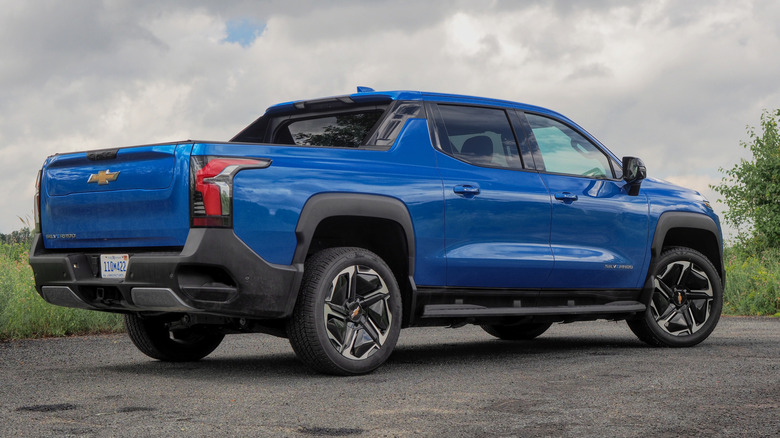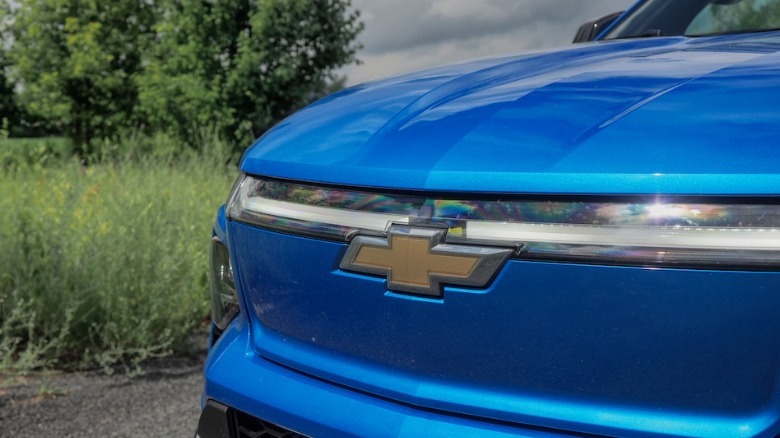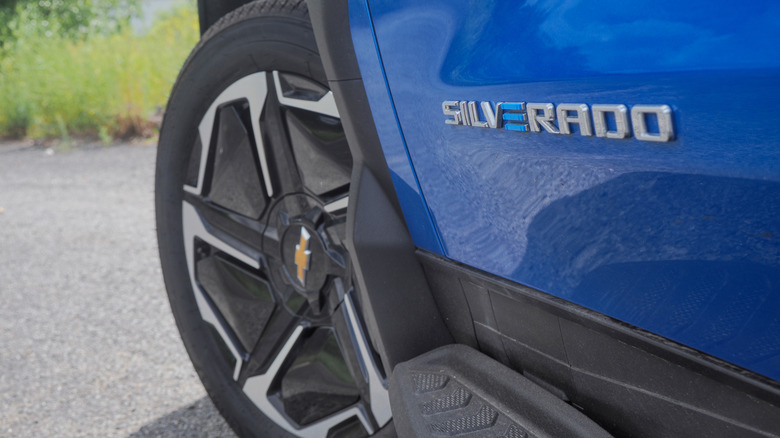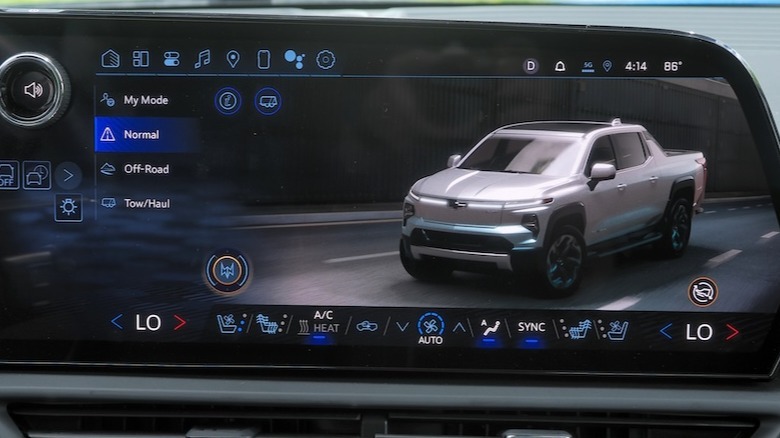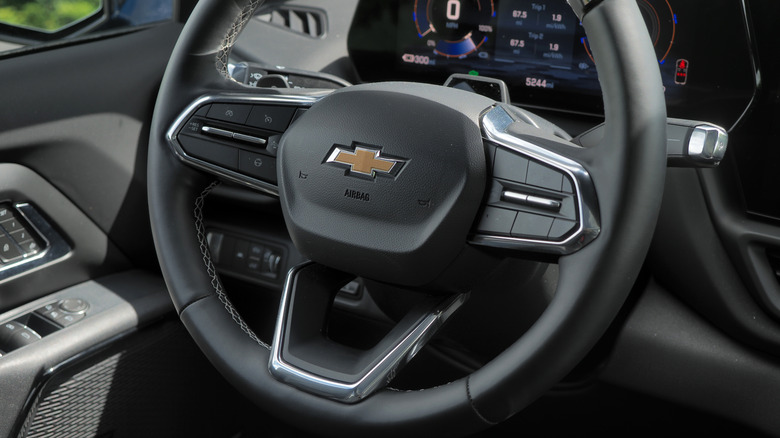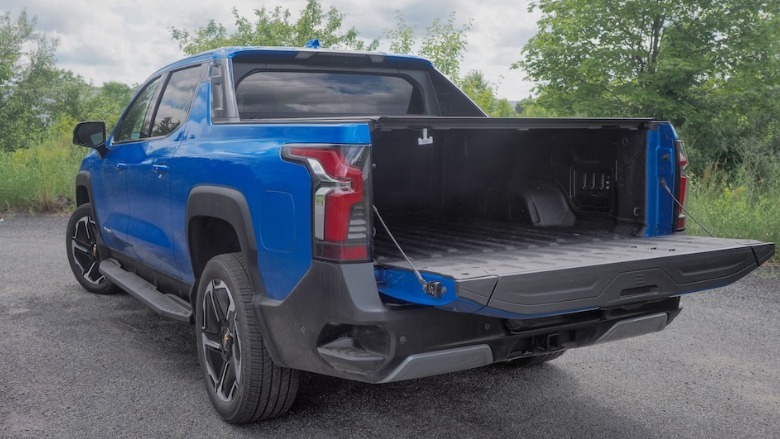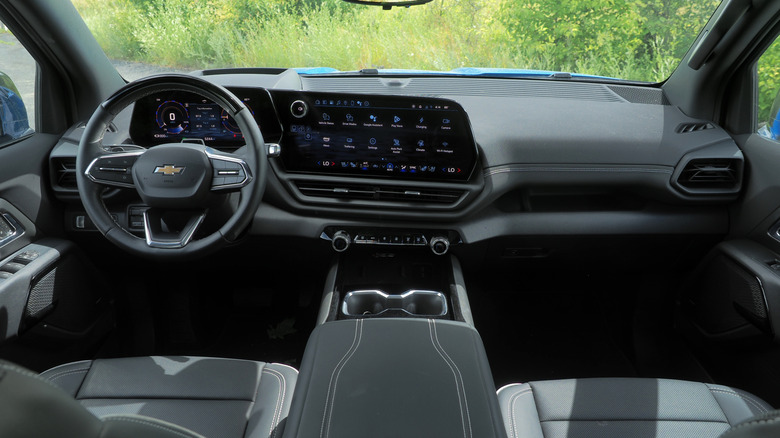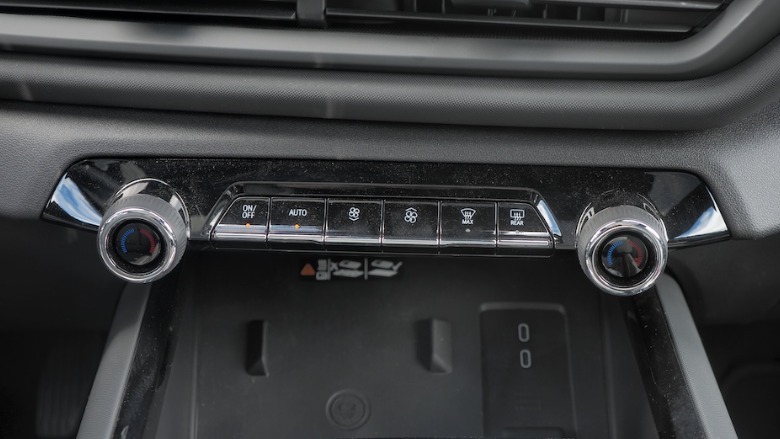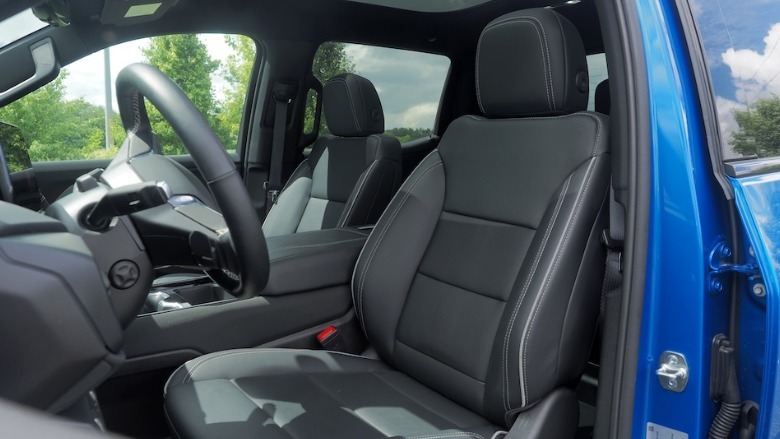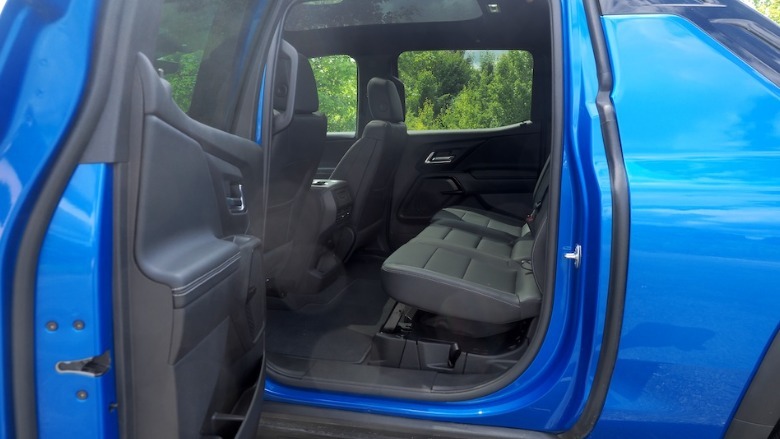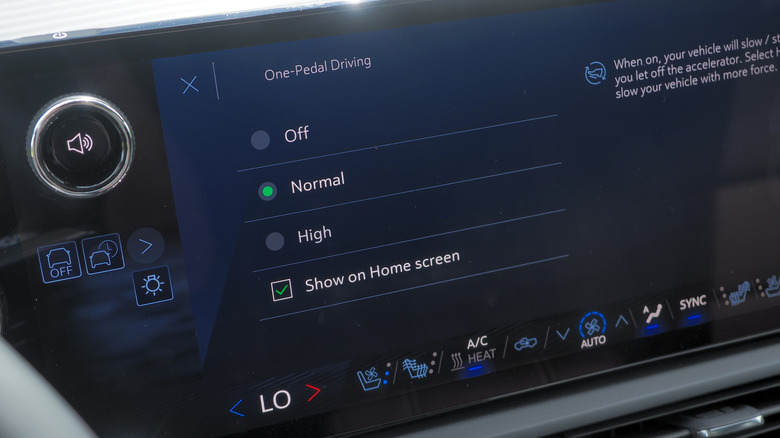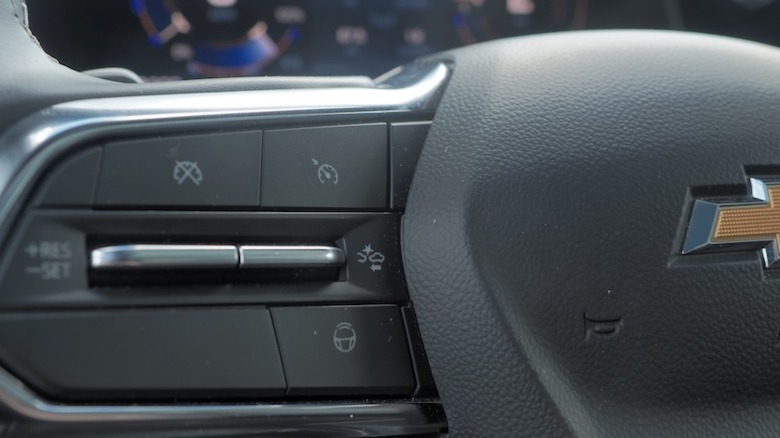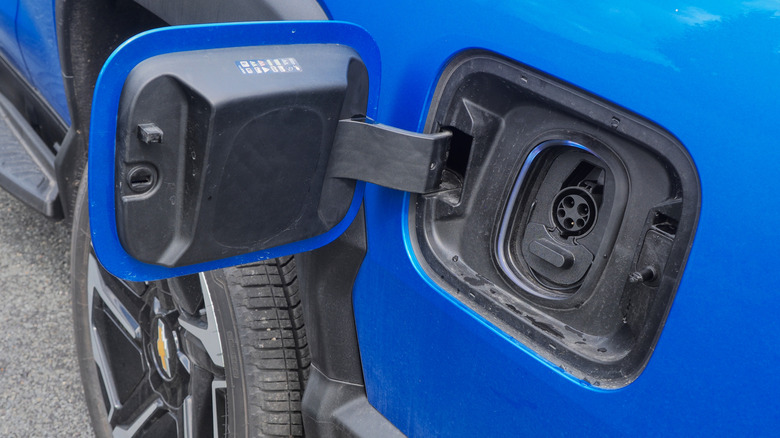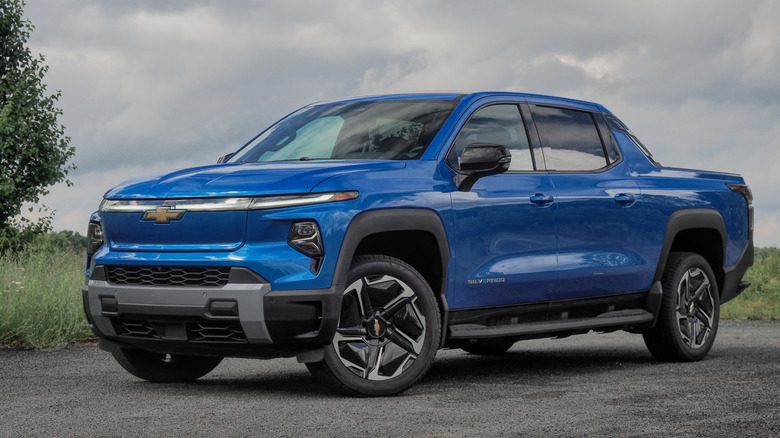2025 Chevrolet Silverado EV Review: The Price Of Settling Range Anxiety
After a slow start, General Motors' big Ultium gamble looks to be paying off. Its single architecture for electric vehicles may not have arrived on time, and we may have had to wait for more affordable models based on it, but finally we're seeing the Ultium-powered range fill out — including in the heartland of American automakers' lineups, the pickup truck.
The Chevrolet Silverado EV, though, arguably made the same mistake that many new electric models stumble into, by pretending to be something it wasn't. The initial RST trim, though beefy on paper, seemingly forgot it was also a big, heavy truck. Its massive wheels and lashings of torque might've suited a sports car, but only undermined ride quality and general flexibility in a pickup.
The 2025 Silverado LT, then, isn't just cheaper (it starts at $75,195 including $2,095 destination, versus the $89,395 of the RST) but more mainstream in all the right ways. It has smaller wheels and more towing capacity, yet — at 645 horsepower and 765 lb-ft of torque in the cringeworthily-named Wide Open Watts mode, versus the RST's 760 hp and 785 lb-ft — can hardly be described as underpowered. There's a payoff to not being a trim snob.
You'll know this isn't the regular Silverado
For all GM's efforts to push Ultium in smaller, more affordable EVs, it's hard not to associate the platform with behemoth-scale monsters. GMC's Hummer EV gave Ultium its bombastic, "who needs gasoline?" debut; the Cadillac Escalade IQ, for all its sleek luxury, is so heavy as to be exempt from EPA testing and labeling. Just by dint of having an EPA range rating, the Silverado EV feels positively mainstream.
There's no real attempt, here, to make the Silverado EV blend in with its gas and diesel brethren. That's stark contrast to Ford's strategy with the F-150 Lightning, which shares as much aesthetic — and dimensional — detail as possible with the combustion truck, both to ease in potential buyers and allow them to swap around accessories regardless of drivetrain.
With its curvaceous fascia (I see hints of axolotl, though that's not intended as a criticism) and buttressed cab-to-bed transition (I see first-gen Honda Ridgeline, and maybe that's a bit more of a criticism) there'll be no mistaking the Silverado EV for its more traditional cousin. Meanwhile, while it may not be as beefy a boy as the curb-crushing Caddy, that doesn't mean this is a small truck. These wheels — which manage to look a little small in the expansive arches — actually measure in at 22-inches.
Balancing aesthetics with daily usability
Those 22-inch rims are a welcome step down from the 24-inch versions Chevy fits to the Silverado EV RST as standard (and which look grand, but aren't great for ride quality). They're part of the $6,800 LT Premium Package — which also includes auto-park, the Multi-Flex midgate, 19.2 kW Level 2 charging support, the Tech Package, and Super Cruise — replacing the LT's standard 18-inch wheels.
As a balance between aesthetics and ride, I could live with the 22-inchers. There's no adaptive ride control air suspension on the LT, unlike the RST and Escalade IQ, just 4-wheel independent suspension. You miss out on rear wheel steering, too, which the more expensive models rely upon to trim the turning circle at lower speeds.
Nonetheless, I couldn't really find fault with how the Silverado EV LT drives. It's reasonably compliant — by pickup standards — and the general heft (and the contribution to that by the low-slung battery pack) leaves it feeling stable and planted. Factor in the genuinely impressive power, and straight-line speed is not in question. The Chevy just hunkers down slightly and rockets away.
Powerful, but this is still no sports car
Unsurprisingly, this is not a sports car. Thundering into the corners generates the same sense of whole-body puckering as attempting to treat a regular, gas Silverado as a Corvette. Chevy's steering is heavily power-assisted, lending a further sense of remoteness from the road, and the Silverado EV never does that "shrinking around you" trick that some big cars manage through their general nimbleness.
It's hard to imagine that most Silverado EV owners will be too dismayed by all this, though. They'll probably be more interested in the 12,500 pound tow capacity — up from the 10,000 pounds of the RST — and 1,800 pound payload rating. Or, for that matter, how convenient the Multi-Flex tailgate is when paired with the standard (and only option available) 5 foot 11 inch bed. Juggling around its origami-esque array of configurations helps support everything from canoes and long ladders, through to big sheets of plywood.
Pop the power hood open, and Chevrolet's "eTrunk" — aka the Silverado EV's frunk — holds 10.7 cu-ft. Not bad, but the F-150 Lightning tops it with 14.1 cu-ft.
High-tech inside, but not overwhelmingly so
Inside, the Silverado EV dashboard falls somewhere between the screen-laden excesses of the Escalade IQ, and the Hummer EV's forced burliness. There's an 11-inch display for the driver and a 17.7-inch touchscreen for the Google built-in infotainment.
There's often a lot going on, on-screen — contextual controls to the left and the top, then a bunch of HVAC icons along the bottom — but Chevy wisely includes physical switchgear for quickly tweaking cabin temperature.
Once past the initial learning hurdle, the infotainment system is reasonably straightforward. There's still no Apple CarPlay or Android Auto support, mind, but Google Maps works well, and the Google Assistant is tightly integrated with the EV's core systems. Sadly, you can't tell it to start Super Cruise but once initiated on the pre-mapped highways it's supported on, GM's hands-free driver assistance tech remains the most convincing of its ilk.
Heated and ventilated front seats — clad in sturdy Evotex faux-leather — a heated steering wheel, and heated outboard rear seats are standard on the LT. So is a 360-degree camera, reverse automatic braking and rear cross-traffic braking, intersection automatic emergency braking, rear pedestrian and side cyclist alert, and enhanced automatic emergency braking. A Bose audio system is standard, and wireless charging; a head-up display, rear camera mirror, bed-view camera, and trailer integration are part of the Tech Package.
A big battery means big range (but big consumption, too)
The 2025 Silverado EV LT Extended Range is rated at 408 miles on the EPA's test cycle. Add the LT Premium Package, and that dips to 390 miles. In theory, an RST can — with the Max Range battery — hit 460 miles, while a Silverado EV Work Truck could do as much as 492 miles with the same pack.
My own, mixed driving landed at 1.9 miles per kWh. Based on the 170 kWh usable capacity of the 20-module Extended Range battery, that would work out to 323 miles of total driving on a full charge. A fair amount less, certainly, than the EPA says you could do, but I definitely wasn't coddling it.
Driving isn't the only way to make use of the EV's battery, with 7.2 kW of AC offboarding power as standard. There's a 120V AC outlet in the rear cabin, another in the frunk, plus four more — and a 240V outlet — in the bed. That's along with a bevy of USB ports and 12V outlets in the cab.
Charging takes time
When you do, inevitably, have to plug in to charge, there's 11.5 kW Level 2 support as standard on the LT, and 19.2 kW on the RST. The LT Premium Package upgrades the LT to the faster rate, though of course you'll need a suitably-potent home charger to actually get close to that limit. That means a hardwired, 100A charge station, something that not even GM's own $1,700 Energy PowerShift model can achieve (it tops out at 80A).
Given the size of the Silverado EV's battery, and the 32A charge station I had it plugged into, I wasn't surprised to see the dashboard suggest 4-5 miles of range added per hour. You'll get much swifter rates — and pay more — at a DC fast charger, where the Chevy supports 220 kW in Standard Range form, 300 kW in Extended Range, and 350 kW in Max Range. That could mean as much as 100 miles of range added in 10 minutes, depending on the charger you find and how depleted the battery is when you plug in.
One advantage — not unique to Ultium, but still not ubiquitous across EVs — is the Silverado EV's bidirectional power support. With the right home charger, the GM Energy V2H Enablement Kit, and a suitably trained installer, you can turn the electric pickup into a Tesla Powerwall-style backup battery. That can deliver up to 9.6 kW back to the home, with automatic switchover in the case of an outage.
2025 Chevrolet Silverado EV Verdict
That sort of secondary use for when your vehicle is parked up is, I think, one of the reasons why it's so valuable to have all-electric truck options alongside their combustion counterparts. Yes, some pickup buyers will consider EV charging a deal-breaker; no, not every truck driver is ready to leave gas or diesel behind. But it'd be myopic to conclude that, simply because the Silverado EV's strengths are non-traditional, it must automatically be underwhelming.
That it's expensive, though, is not in question: even in "more affordable" LT form, this particular example lands at $84,985 all-in. That's flagship F-150 Lightning Platinum territory, and while the Ford may have less range (the EPA says 300 miles) its smaller battery should charge faster. Meanwhile, there's Chevy's more barebones Work Truck trim, yes, but its $57k configuration is only rated for 282 miles, and the Extended Range (422 mile) version jumps to $69,495.
I like how the Silverado EV drives, and it certainly counts as decently luxurious along with being practical. While being able to use it for whole-home backup (or camping) purposes is definitely useful, though, you can do the same with a significantly cheaper F-150 Lightning. Range anxiety is real, but you'll pay handsomely to squash it with Chevrolet's capable but still costly electric truck.
